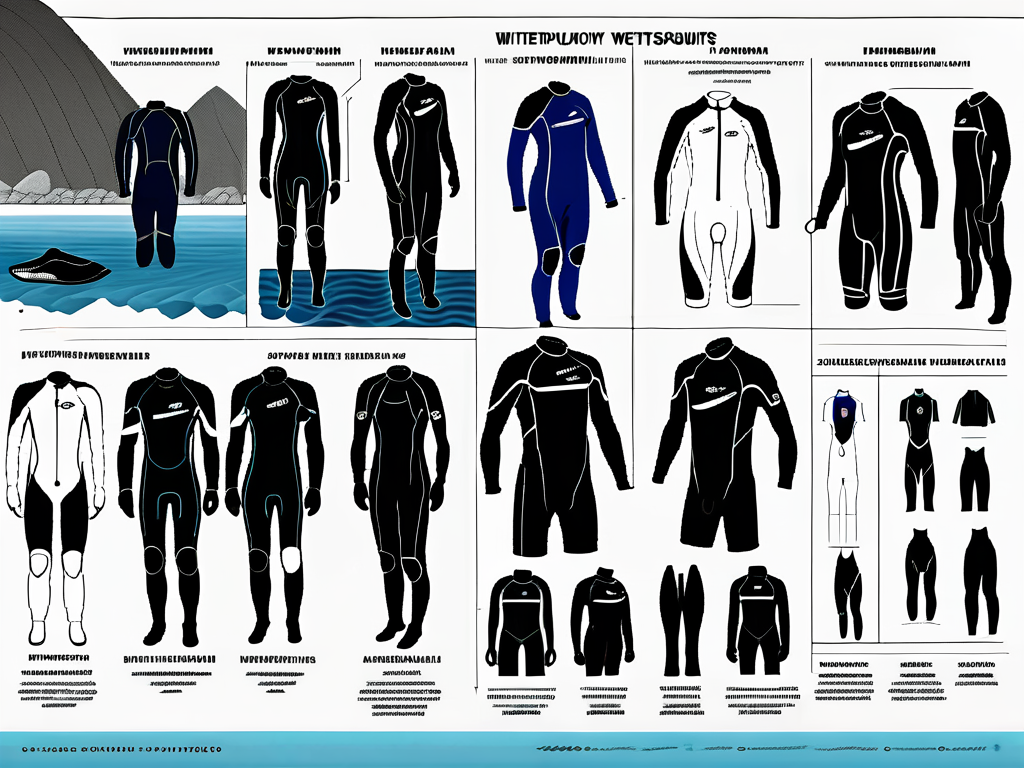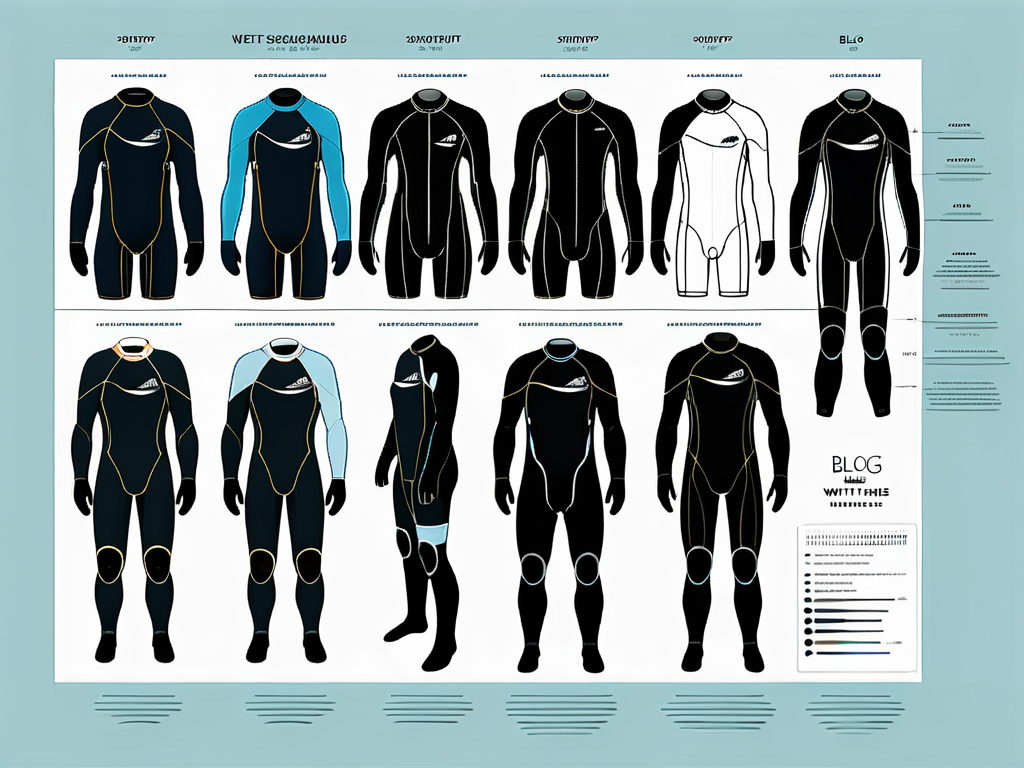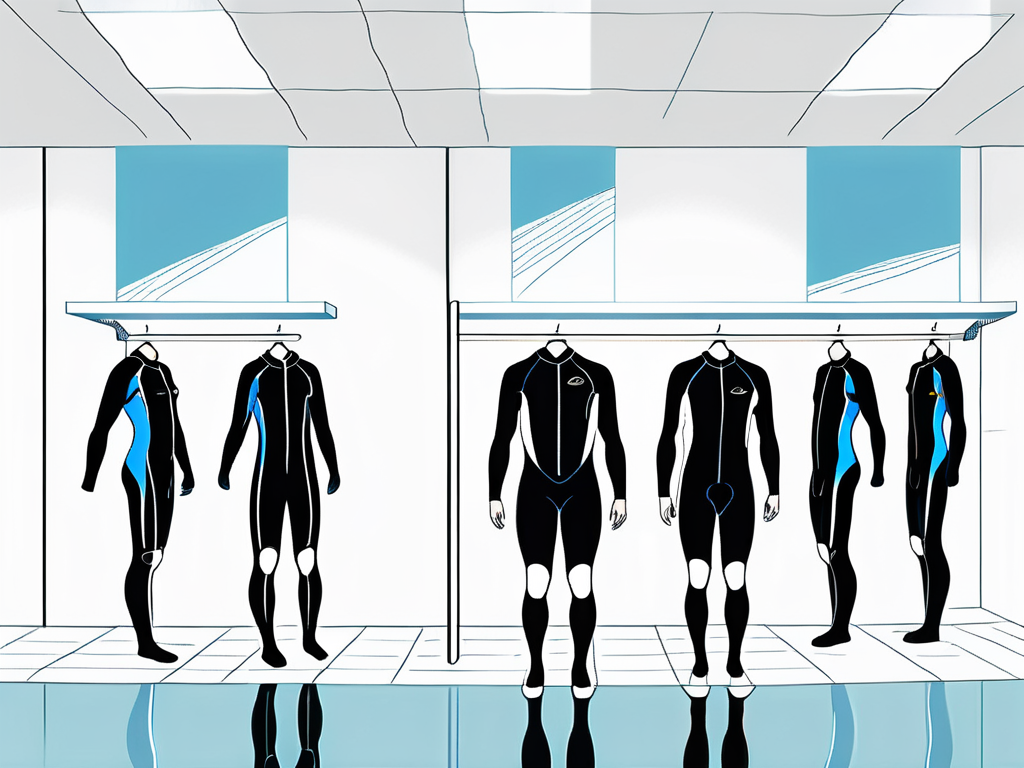Wetsuit Bathing Suit: The Ultimate Guide to Choosing the Right Fit
When it comes to enjoying water sports, having the right wetsuit is paramount. Whether you're surfing, diving, or paddleboarding, a well-fitted wetsuit not only enhances your performance but also ensures your comfort in varying water temperatures. This ultimate guide will provide invaluable insights into choosing the perfect wetsuit for all your aquatic adventures.
Understanding the Importance of a Well-Fitted Wetsuit
A wetsuit is more than just a fashionable piece of gear; it's a second skin that keeps you safe and warm while you're in the water. Understanding the significance of a well-fitted wetsuit goes beyond aesthetics; it's about boosting your confidence and maximizing your enjoyment in the water.
The Role of Wetsuits in Water Sports
Wetsuits serve a crucial function by trapping a thin layer of water between the suit and your skin, which is then warmed by your body heat. This technology keeps you insulated and reduces the risk of hypothermia during prolonged water exposure.
Moreover, wetsuits provide buoyancy and protection from harsh ocean conditions, such as sharp objects or jellyfish stings. Their sleek design also reduces drag, allowing for heightened performance while swimming or surfing. Additionally, modern wetsuits are often made with advanced materials that enhance flexibility and comfort, enabling athletes to perform at their best without the hindrance of bulky gear.
How a Poorly Fitted Wetsuit Can Affect Performance
The fit of your wetsuit can significantly impact your overall experience. A suit that is too tight can restrict your movement, making it difficult to paddle, kick, or swim efficiently. Conversely, a wetsuit that's too loose can allow water to enter, leading to a chilling effect that detracts from your performance.
Uncomfortable wetsuits can also cause chafing and skin irritations, which can ruin your day on the water. Thus, finding a suit that fits snugly but allows for comfortable movement is essential for any water sport enthusiast. Furthermore, a well-fitted wetsuit can enhance your body position in the water, improving your hydrodynamics and allowing you to conserve energy during long sessions. This efficiency not only helps you stay warmer but also enables you to push your limits, whether you're surfing massive waves or diving into the depths of the ocean.
It's also worth noting that different water temperatures and conditions require varying types of wetsuits. For instance, a thicker wetsuit may be necessary for colder waters, while a thinner, more flexible suit is ideal for warmer climates. Understanding these nuances can help you select the right wetsuit for your specific needs, ensuring that you remain comfortable and protected regardless of where your aquatic adventures take you.
Key Factors to Consider When Choosing a Wetsuit
Choosing the right wetsuit involves more than just picking a trendy style. There are several factors to consider, ensuring you select a suit that complements your unique needs.

Material and Thickness
The material of a wetsuit greatly influences its insulation properties and flexibility. Most wetsuits are made from neoprene, which offers warmth and durability. The thickness of the neoprene often varies, ranging from 2mm to 7mm.
For warmer waters, a thinner wetsuit may suffice, while colder climates require thicker options to ensure adequate warmth. Be sure to choose a thickness that corresponds to the temperatures you’ll be facing. Additionally, some wetsuits incorporate advanced materials like limestone neoprene or Yamamoto neoprene, which can provide enhanced thermal insulation and are often more environmentally friendly. These materials can also offer better stretch and comfort, allowing for a more enjoyable experience in the water.
Size and Fit
Finding the right size is crucial for optimum performance. Wetsuits come in various sizes, and consulting size charts can be a great start. Aim for a fit that feels snug, with minimal gaps, while still allowing you to move freely.
Don’t forget to try on different sizes and brands since fits can vary widely. Consider factors like shoulder movement, torso length, and leg fit to discover what feels best on your body. It’s also worth noting that some brands offer custom sizing options, which can be particularly beneficial for those who find standard sizes don’t quite fit their unique body shape. A well-fitted wetsuit not only enhances comfort but also improves your hydrodynamics, allowing you to glide through the water with ease.
Style and Design
The style of a wetsuit plays an essential role in functionality. Full wetsuits are ideal for colder waters, while spring suits are more versatile and great for transitional seasons. Shorties and long johns offer extra flexibility and are perfect for warmer conditions.
Designs also allow for personalization. Whether you prefer classic black or vibrant colors, there’s a vast range of styles that can allow your personality to shine through while you ride the waves. Additionally, many wetsuits come with features like reinforced knee pads, flatlock seams, and even built-in UV protection, enhancing their practicality. When selecting a wetsuit, consider not just the aesthetic appeal but also how these functional elements can contribute to your overall performance and comfort in the water.
The Different Types of Wetsuits
Understanding the different types of wetsuits is essential to selecting the one that best suits your water activities.

Full Wetsuits
Full wetsuits cover the entire body and are an excellent choice for cold-water conditions. They typically feature a zippered back or front entry, allowing for easier wear and removal.
These suits provide maximum insulation and protection against harsh elements, ensuring you remain comfortable during those extended sessions on the water. The thickness of the neoprene material can vary, with options ranging from 3mm to 7mm, catering to different temperature ranges. Additionally, many full wetsuits come equipped with features like sealed seams and thermal linings, which further enhance warmth and reduce water entry, making them a popular choice for surfers tackling frigid waves or divers exploring chilly depths.
Spring Wetsuits
Spring wetsuits are shorter in length, with short sleeves and legs. These are ideal for mildly warm waters, providing flexibility while still offering some protection from cooler temperatures.
They are favored by surfers and divers during the transitional seasons, allowing for both comfort and performance. The design of spring wetsuits allows for greater freedom of movement, which is crucial when performing dynamic maneuvers in the water. Many models also incorporate features like quick-drying materials and strategic panel placements that enhance mobility, making them an excellent choice for active water sports enthusiasts who want to maximize their performance without sacrificing warmth.
Shorties and Long Johns
Shorties, with short legs and sleeves, and long johns, featuring long legs and no sleeves, are excellent options for warmer water activities, providing protection without overheating.
Both styles offer superior flexibility and ease of movement, making them perfect for various water sports, from snorkeling to kayaking. Shorties are particularly popular among paddleboarders and wakeboarders, as they allow for a full range of motion while still offering some protection from sun exposure and minor abrasions. Long johns, on the other hand, are often chosen by divers who prefer a sleeveless option that allows for layering with a separate top, providing versatility in changing water temperatures. Both options are typically made from lightweight, stretchy neoprene, ensuring comfort and performance without the bulk of thicker suits.
Tips for Trying on a Wetsuit
When purchasing a wetsuit, trying it on is critical to ensure the perfect fit. Here are some tips to keep in mind during the fitting process.

What to Wear When Trying on a Wetsuit
Always wear suitable undergarments, such as a swimsuit or rash guard, when trying on a wetsuit. This not only provides comfort but also allows you to feel the true fit of the wetsuit against your skin.
If possible, try to wear the type of undergarments you plan to wear while using the wetsuit, as this can affect how it feels during water activities.
How to Know if a Wetsuit Fits Correctly
A well-fitted wetsuit should feel snug, with no air pockets or excessive loose material that can lead to water entry. Ensure that you can move your arms and legs freely without restrictions.
Additionally, the seal around your ankles, wrists, and neck should be secure but not overly tight, ensuring insulation without discomfort.
Care and Maintenance of Your Wetsuit
After investing in a quality wetsuit, proper care and maintenance are crucial in extending its lifespan and performance. Here are some guidelines to follow.
Cleaning and Storing Your Wetsuit
Always rinse your wetsuit with fresh water after every use to remove salt and chlorine that can degrade the material. Use a mild detergent designed for wetsuits when washing, and avoid harsh chemicals.
When storing your wetsuit, avoid folding it. Instead, hang it on a wide hanger in a cool, shade-free area to prevent creasing and damage.
Repairing Damages and Extending the Lifespan of Your Wetsuit
If you notice any tears or damage, it’s possible to patch small holes or seams with a wetsuit repair kit. Addressing these issues promptly prevents further damage and extends the life of your suit.
Investing time and care into maintaining your wetsuit ensures that it remains a reliable companion for many adventures in the water, enhancing your overall experience.
In conclusion, selecting the right wetsuit is an investment in your comfort, safety, and overall performance in water sports. By understanding your options and considering the factors discussed, you'll find the perfect fit to navigate the waves confidently.















